Thank you all for participating in the first-ever survey of Sugar Dot Surveys! I wanted to find out what (if anything) you use to speed-dry your icing, and how you use those tools and why. You sure did come through. Those who participated range from new decorators to seasoned pros, and come from all over the world. (Pssst! Take the survey here, if you haven't already. It's still open to receive responses!)
I teach cookie decorating and business classes. I share my knowledge with my students, but always let them know that my way is just ONE way to do things. I encourage my students to join sites like Cookie Connection and groups on social media so that they can get many opinions and learn a variety of methods to do what we do. The same goes for those of us who teach or have been decorating for a while. There’s so much to learn from our community, no matter how long we’ve been at it!
So let’s take a look at how and why we speed up the drying process of icing.
At the time this post was written, 147 of you had responded to the survey. A whopping 88% of you do indeed use one or more tools to speed up drying. The small 12% who allow their icing to dry naturally do so for several reasons. They: (1) are new to decorating so haven’t tried a speed-drying method; (2) are hobby bakers so don’t feel the need to rush; (3) feel that speed-drying dries out cookies; (4) prefer the look of air-dried cookies; or (5) live in dry climates so have no need for a speed-drying tool.
Why do so many of us feel the need to speed-dry? The most popular reason, by a small margin, is to partially dry the icing (57% of respondents) so that one can quickly move on to decorating on top of cookie base coats. Other reasons include: to enhance icing sheen (53%), to prevent craters (50%), to fully dry the icing to allow decorating on top (47%), to prevent color-bleeding (39%), and to be able to package finished cookies sooner (21%).
What tools do we use for speeding up drying time? A table fan (47%) and dehydrator (43%) are by far the most popular tools. A low-temperature oven (16%), ceiling fan (10%), and portable space heater (8%) are much less popular options, but still used by some decorators.
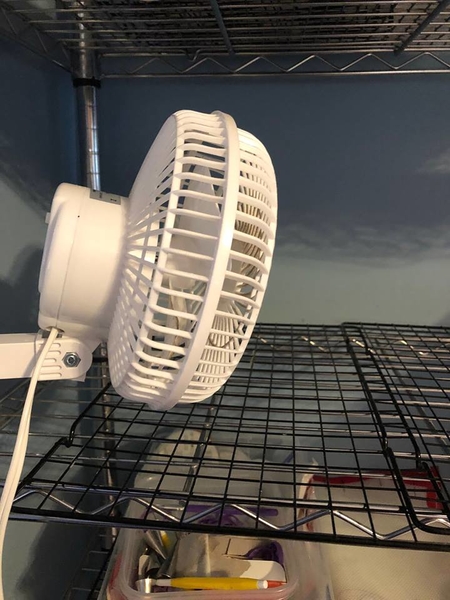
Clamp-Style Fan Setup; Photo by Annie Dearth-Roof of The Cookie Corner
Those who use a fan do so for just a few minutes to overnight. Interestingly, you all use various speeds: low, medium, and even high. Ceiling fans seem to run continually while decorating and overnight.
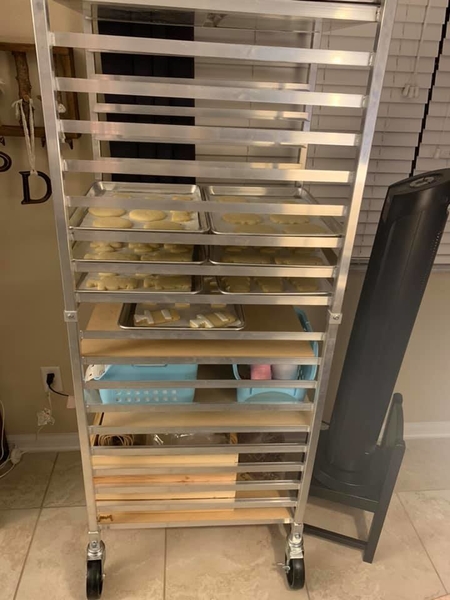
Floor Fan Setup; Photo by Stephanie Dall of Dall House Cookie Co.
Those who use a dehydrator set it to its lowest setting, usually around 95°F (35°C), for anywhere between five minutes and several hours. Most of the respondents leave their cookies in the dehydrator for only 15 to 30 minutes, often to keep the cookies themselves from drying out.
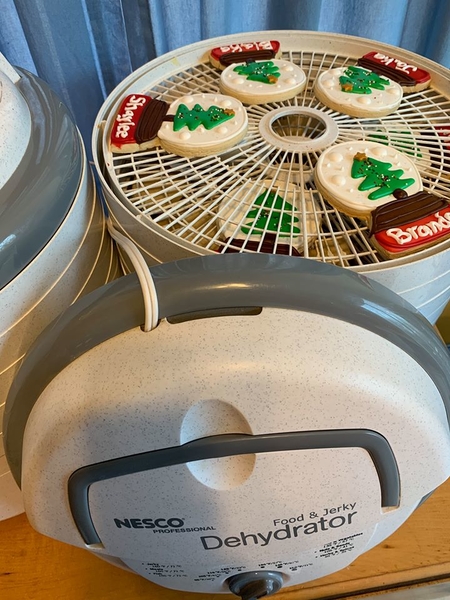
NESCO Dehydrator; Photo by Vicki King of Mimi’s Cookies & Confections
An oven can be used in so many ways to speed up the drying process! Here are some of the methods you mentioned: (1) with it on at its lowest temperature of 95°F to 105°F (35°C to 41°C); (2) at its lowest temperature with the fan also on; (3) with it off but with both its fan and light on; (4) with it off and just its light on; (5) preheated to a low temperature and then turned off; (6) on the "dehydrate" setting; or (7) on the "bread-rising" setting. One respondent puts a table fan into the oven with the light on!
All of our tools are successful in helping us to achieve similar results, so WHY do we use the tools that we do? For many, it’s about money. Dehydrators can be pricey. The other tools are more budget-friendly. Everyone has an oven.
There’s also the issue of space. Dehydrators can take up a lot of room. Space isn’t an issue with the other tools.
Some prefer the dehydrator or the oven because they're enclosed. The cookies are placed inside them and protected from anything flying in the air, or from people and pets.
 Hendi Six-Tray Dehydrator; Photo by Trish Strydom of Design a Cookie
Hendi Six-Tray Dehydrator; Photo by Trish Strydom of Design a Cookie
A ceiling fan is preferred by some because of the large area that it can affect.
Of course, there are some things that we wish we could change about our chosen tools. Sometimes an oven or dehydrator won’t hold enough cookies. Some people don’t like tying up the oven with drying cookies, so that it can’t be used for actual baking. Having to get up to go to the oven is another drawback. Some dehydrators don’t allow the temperature setting to be changed, and they take up a lot of room on one's decorating table AND to store. Some complain that the liners for their dehydrator are not easy to clean. Some decorators cite problems with the trays in their dehydrators: they can be flimsy, sloped, and/or too close together or stacked, making it easy to wreck cookies on the way in or out.
The airflow with some fans can be too forceful and cause ripples in the icing. While fans can be beneficial for cookies, they can make for a very uncomfortable/cold cookie decorator! Some who use a fan believe that it takes longer than other methods. Another problem noted with fans is that, if you’re not careful, they can actually make your icing start to crust before you’re ready! However, it seems that the main concern with using fans is that dust in the air or on the fan blades can be blown onto the cookies.
Because each tool has its own pros and cons, some cookie decorators will use more than one. For example, some decorators will use a fan for drying parts of the cookies just enough to go on to the next step, and then use a dehydrator to thoroughly dry the cookies in a safe/clean place. To ensure their own personal comfort level, other decorators will use a table fan during warmer months and a space heater in colder months.

Cabela Ten-Tray Deluxe Dehydrator; Photo by Jen Chun of Craving Sugar
I asked if there were some tools that you avoid. Your answers were interesting! Some avoid heat guns and heat lamps because they can get too hot. In the case of a heat gun, it also requires the decorator to hold it over the cookies, which can be tedious. Because of the dust issue mentioned earlier, there are many decorators who refuse to use a fan.
What I found REALLY fascinating is that we have the same fears – icing rippling or cracking, cookies drying out, colors bleeding, and butter-bleed - BUT we avoid using different tools because of it! Many are under the impression that a dehydrator dries out cookies, so will avoid its use. Others think that the oven will do the same, so avoid IT. Some say that the dehydrator will cause ripples in the icing, while others have never had that happen except with a table fan. Some blame butter-bleed on their oven and others on their dehydrator.
Well, that sure confuses things, huh? What to do?! It’s such a personal choice because of all of the variables mentioned earlier, most notably money, space, and climate. There are also feature and performance variations across tools, and even across different brands and models of the same tool.
My preferred method is most definitely a dehydrator. After having purchased and rejected two other brands, I have an LEM five-tray dehydrator*, and honestly can’t imagine decorating without it. (*Disclaimer: This is an affiliate link, from which I earn referral revenue.) The fan is in the back, so all cookies get even exposure. The trays are sturdy, perfectly level, and a good distance apart. The door is in the front, so I don’t have to lift the lid or trays. If I run out of room, the cookies on the first tray have usually been in long enough to be removed and replaced with more cookies. The dehydrator sits next to me as a I decorate directly on the trays. My cookies easily go in and out of the dehydrator all day, until I finish decorating. At that point, they go onto cookie sheets to dry overnight. I never experience butter-bleed, colors bleeding, or icing rippling. I do struggle with craters, but can’t blame the dehydrator for that. I don’t see another tool doing any better job of preventing craters (because our own icing/climate/humidity are larger crater-inducing factors in my opinion).
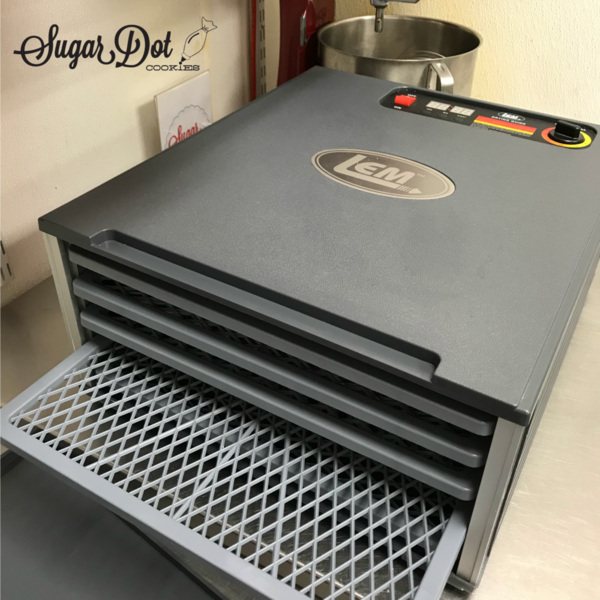 LEM Five-Tray Dehydrator; Photo by Dotty Raleigh of Sugar Dot Cookies
LEM Five-Tray Dehydrator; Photo by Dotty Raleigh of Sugar Dot Cookies
If you’re in the research phase of learning about speed-drying your icing, I hope this survey and analysis have been helpful. If you’ve been using a tool that isn’t quite working, I hope we’ve given you some options.
Thank you for participating in this survey and allowing us to learn from YOU. Again, if you haven't yet taken it, please do so here! It will be open and capturing new responses in perpetuity! Once you take it, all of the survey results will reveal in the same place too - an added plus!
Until next time,
Dotty Raleigh
Sugar Dot Cookies


Dotty Raleigh is the owner of Sugar Dot Cookies, which began in 2013 with custom cookie orders, and has since grown to include decorating classes and cookie parties. In 2018, Dotty began teaching a series of online classes called Cookies as Business and providing business e-books, which cover everything from finding the optimum shop location and workflow management to pricing and packaging cookies. Dotty loves sharing her years of experience and encouraging those just getting started in their own cookie businesses. Please visit Dotty's Cookie Connection member profile and Facebook and Instagram pages.
Photo credit: Dotty Raleigh
Note: Sugar Dot Surveys is a bimonthly Cookie Connection survey/blog feature designed to foster experience-sharing and identify best business and decorating practices. Dotty starts by posting a survey every other month about a specific cookie practice, tool, or technique, and concludes with a recap of responses aimed at helping everyone learn and grow. This article expresses the views of the author, and not necessarily those of this site, its owners, its administrators, or its employees. To read all of Dotty's past Sugar Dot Surveys recaps, click here. And to see all of her surveys, click here.





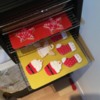
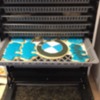
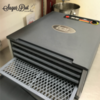
Comments (10)